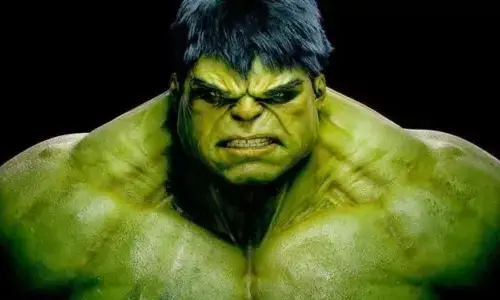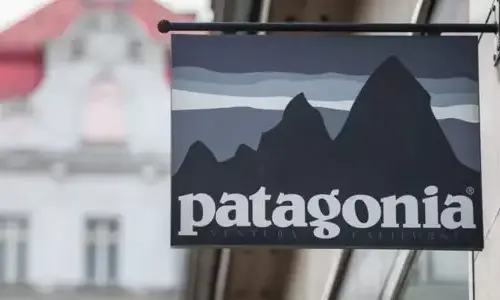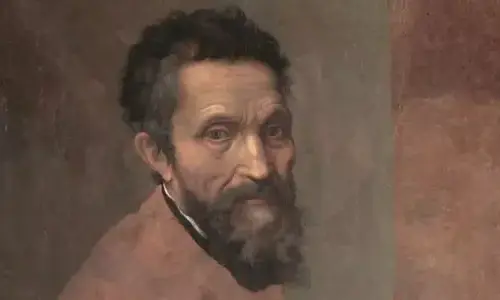15 great facts about Machu Picchu
Put high on the top of a mountain ridge above Peru's sacred valley lie
A great donation site when everyone who performs the journey to achieve its skyrocketing height, the magic of this Inca architecture is one of the greatest archaeological discoveries
Although it is the most protected archaeological site of the Inca Empire, there is no record of Machu Picchu's purpose, because the Inca language is only said, not written.
The result of this lack of knowledge, there were many wild theories when it comes to Machu Picchu, which is a big reason why it
So, what do we really know about Machu Picchu?
""

The archaeological site Machu Picchu is located in the peace of the vertices of Machu Picchu (Mountain) and Huayna Picchu.
'
"" "" "
This makes you wonder if it is called or not
Hiram Bingham did not explore Machu Picchu.

When Hiram Bingham stumbled on Machu Picchu's ruins in 1911, he quickly shared his discovery with the Western world.
However, a little-known reality is that he actually led by a Peru guide by the name of Melchor ArtAga.
In fact, Machu Picchu is never really lost.
While local indigenous people are clearly aware of its existence, Spaniards can never approach, that's what we should be grateful for today.
'
Augusto Berns could be the first Westerner to MACHU PICCHU.

Not only is that Machu Picchu never loses, but can also Bingham even not the first Westerner look at it.
It was declared many different learners that Adventor and Entrepreneur of Augusto Berns reached Machu Picchu and looting 44 years ago, in 1867.
There are even maps that show reference to ruins since 1874, strengthening the theory that Bingham is definitely not the first person there.
"

Machu Picchu is not exactly what Bingham is looking for when
When he asked, he was really looking for "lost city of the Inca".
After digging the ruins of Machu Picchu Bingham, he concluded that he found the lost city, and published his findings.
Although they are very incorrect, have led to worldwide interest in Machu Picchu.
Of course this has promoted a more thorough investigation, as well as millions of visitors poured about the famous ruins today every year.
Ironically, Bingham really stumbled in the ruins of the city lost on the way towards Machu Picchu, but rejected it without much thought and continued on his journey.
Until 1964, gene s
Is Machu Picchu a temple full of virgins?

After Bingham returned to Machu Picchu in 1912 and started digging the website, he gave suggested that it was used as a sanctuary for the Virgin of the Sun, of Religion Inca.
At the Spanish invasion, there are several thousands of virgin women, also known as selected people, who are kept in households like Temple.
Bingham has made this suggestion of more than 75% of the first few dozen skeletons identified as a female.
This theory has long been debugging, with the majority of the troubles that are male, not female.
Machu Picchu is not used for human sacrifices.

There are many legends and legends about Machu Picchu being used as a website for human sacrifices, but very little scientific evidence of this fact.
Although it is a small surprise, because the legendary mountain residential area was originally said to be a sanctuary for the selected women, who among unusual missions ended as sacrifice of
This theory has been debugged in course, but there are many other locations in the Inca Empire, where such things have happened.
It is most likely a palace for the rulers of the Inca Empire

Since the discovery, there have been a series of theory of Machu Picchu's purpose.
Some people claimed it was a mountain fortress, the last Fortress of Lord Inca, while others believe it is a university and a scholarship.
Based on all available proofs and styles that Machu Picchu is built, only one theory is supposed to be very possible.
This theory says it is a palace for the rulers of the Inca Empire, Pacha
Machu Picchu is made up of nearly 200 buildings.

Placed on a 5-mile long strip, Machu Picchu has nearly 200 known buildings, with more frequently detected in further digging works.
From temples to Plazas, to residential buildings and bathrooms, what remains left to look at the eyes are still a Marvel to see.
In all excavation structures and is determined so far, the most impressive and the most important importance is the biggest, as well as the most legendary the temple of the sun.
The temple, also known as sacred stone has been used as a website to pay Van Trong and provide services to the sun, from what we can gather.
The construction of Temple of the Sun is one of the most impressive forms of architecture and built on the website.
An example in which this is most visible is in the temple root, where the stone walls cut the grass with a natural stone cave.
The workmanship here is very natural about the appearance, there must be a second investigation to realize it was done.
Machu Picchu is a magic handmade.

Most stones turn to Machu Picchu's position with weight exceeding 50 pounds (22 kg).
Although this doesn't seem most, you have to remember that these things will be shipped around narrow mountain roads.
However, Marvel is really here not that they have tried to do this, which is how they gain this impressive miracle of this new world technique.
Some ancient civilizations, such as ancient Egyptians, are known for their ability to change the number of huge stones and make it into very impressive structures that they seem almost human
While the Incas created the same impressive structures and relics, a new world civilization, they actually had a very low level of technology.
'
There are more than 3,000 steps in Machu Picchu.

Hiking the Inca trail to Machu Picchu is not for the weak of the heart.
You must go through the height ranging from 8,530 to 13,780 feet (2,600 - 4200 meters), climb and down many thousands of stones cutting hands before you even come in the vision of the rubble.
When you are there, it is not much easier on your feet.
Throughout the winding roads, the path, Plazas and the aisle of archaeological sites, there are more than 3,000 steps!
Machu Picchu is located at the crossroads of the broken lines.

An explanation can happen about how the Incas manage to transfer a lot of rocks and break it to build Machu Picchu and other similar top mountain cities located in the geography of the region.
After investigating these ancient cities and the surrounding area for more than 10 years, Dr. Ruildo Menegat presented its findings to the American Geological Association conference in Arizona.
He concluded that Machu Picchu and some nearby big cities were placed on or near the error line and the Inca Empire chose these locations for very specific reasons.
The Inca people can not choose these sites due to their positions on error lines.
Menegat's findings show that instead they have developed construction trends in such areas due to the presence of broken rocks and boosting land, phenomena suitable for error lines.
The abundance of these broken stones allows Inca to form their neck without having to build mine or transfer stone from elsewhere.
Machu Picchu is anti-earthquake.

Although located at the intersection of some error lines, this ancient citadel really resist the earthquake.
A true demonstration for the incredible building skills of the Incas, this resistance is due to the application of a construction technique called Ashlar.
Unlike traditional construction methods, Ashlar does not use mortar of any kind, instead of using rock blocks that are cut to such extreme accuracy that they fit in a similar way
The stones are very suitable for the right suitability that can't be installed even a blade in the middle of them!
On the top of Machu Picchu is located in the Astronomical Observatory.

Don't be fooled, you will not find the giant satellite or telescope here.
Instead, you will find Intihuatana, or Hitching Post of the Sun, a ritual ritual near the main plaza.
Carved from a piece of stone into a central platform and column, Intihuatana 6 feet tall (1.8 meters).
Unfortunately, most of the use of this sacred stone has been lost in the time of the time.
What we know is that it indicates exactly two double marks and can be used to predict eclipses, as well as time to reap and sow seeds.
Without food from the surrounding valleys, the residents of Machu Picchu will be starved.

Machu Picchu has more than 600 terraces, and while most are placed to prevent the city from sliding off the peak and down the valley, others have been used for agricultural purposes.
The conditions are perfect, and even though the crop here thrives, it is impossible to maintain the absolute population of such a small amount of crop land.
These terraces are built very well that centuries after the collapse of the Inca Empire, some are still planted by local people when Bingham comes.
'

Yes, you heard right.
If you tend to take a train from Cusco, Peru's capital, to Aguas Calientes, a small town located in the valley beneath Machu Picchu.
Positioning right on the Urubamba River, this ancient town is the last stop before the journey to the peak.
At Aguas Calientes, you face two options: easy or difficult way.
A difficult way means a trip exceeding 90 minutes with countless stairs that make you windy before you go to the archaeological site.
Easy ways simply jump up on a woven bus slowly up the mountain, allowing you to relax and bring views on the road.
It's easy to see why Machu Picchu quickly rises to famous and becomes a popular destination for tourists from all corners of the world.
Most of Machu Picchu's history is obscured in fog on time, and will most likely remain in that way forever due to lack of evidence and records in writing.
For some people, this lack of knowledge and mystery makes this ancient destroying a big attraction, allowing them to wander through the forgotten and long-term roads, to imagine
Others can come to Marvel in the ingenuity of the Inca Empire, to see Ise in perfect architecture and incredible workmanship still very present in the rubble.
For those with a historical trend, it walks according to the Inca's footsteps and gets a taste of life that can be like for this attractive civilization before it is violated by those
'
 52ºc, New York
52ºc, New York







